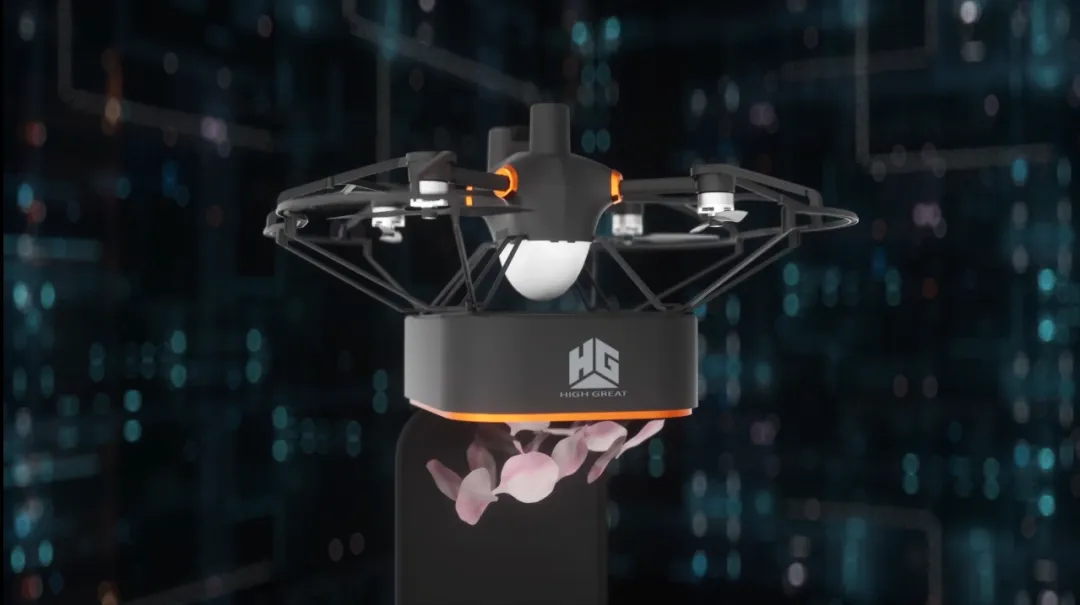How to Pack and Transport an Outdoor Formation Drone?
Drones have changed the way we capture outdoor footage, survey landscapes, and even perform rescue operations. With the advent of formation drones, the possibilities have expanded even further, allowing for synchronized flight patterns and complex aerial displays. In this blog post, HighGreat will share with you how to pack and transport outdoor formation drones to ensure they arrive safely at their destination and in perfect working order.
1. Understanding Your Drone's Specifications
Before you start packing, it's crucial to familiarize yourself with the drone's specifications. This includes its dimensions, weight, battery requirements, and any unique features that may affect the packing process. Check the manufacturer's guidelines for any specific recommendations or restrictions.
2. Gather the Necessary Packing Materials
To protect your drone during transit, you'll need a variety of packing materials:
- Drone Case: A sturdy, padded case designed for your specific drone model.
- Bubble Wrap: For wrapping individual components and providing cushioning.
- Foam Padding: To fill gaps and prevent movement within the case.
- Packing Tape: To secure the case and any additional packaging.
- Document Envelope: To store manuals, receipts, and any other paperwork.
- Shipping Box: Slightly larger than the drone case to allow for padding.
3. Preparing the Drone for Packing
Turn off the drone and remove the propellers. If your drone has a camera or other detachable parts, remove these as well. Ensure the battery is securely stored in a non-conductive container to prevent any accidental activation during transit.
4. Packing the Drone
Begin by wrapping the drone's body with bubble wrap, ensuring all vulnerable areas are covered. Place the wrapped drone into the case, followed by any additional components such as the controller, batteries, and propellers. Use foam padding to fill any gaps and prevent movement.
5. Securing the Drone Case
Once the drone and its components are safely nestled in the case, close it securely. Use packing tape to reinforce any vulnerable areas of the case, such as latches or seams.
6. Packing the Shipping Box
Place the drone case in the center of the shipping box. Surround it with additional padding, such as crumpled paper or more foam padding, to minimize movement. Seal the box with packing tape, ensuring all seams and openings are securely closed.

7. Labeling and Documentation
Clearly label the box with the recipient's address and any necessary handling instructions, such as "Fragile" or "This Side Up." Include a document envelope with the drone's manual, warranty information, and a copy of the packing list.
8. Choosing a Shipping Carrier
Select a reputable shipping carrier that offers tracking services and insurance options. Compare shipping rates and delivery times to choose the best option for your needs.
9. Insuring Your Shipment
Given the value of drones and their components, it's highly recommended to insure your shipment. Check with your chosen carrier for insurance options and coverage details.
10. Shipping and Tracking
Once your drone is packed and ready to go, drop it off at the shipping carrier's location or schedule a pickup. Keep a record of the tracking number to monitor the progress of your shipment.
11. Post-Shipment Considerations
After the drone has been shipped, maintain communication with the recipient to ensure they're aware of the expected delivery date. If any issues arise during transit, contact the shipping carrier immediately to address the problem.
12. Tips for International Shipping
If you're shipping your drone internationally, be aware of the following:
- Customs Regulations: Research the destination country's import regulations for drones.
- Export Licenses: Some drones may require an export license due to their technology or components.
- Duty Fees: Be prepared to pay any applicable duty fees upon arrival in the destination country.
Conclusion
Shipping an outdoor formation drone requires attention to detail and a thorough understanding of the process. By following these steps, you can ensure your drone arrives safely and ready for action. Whether you're a professional drone operator or a hobbyist, taking the time to pack and ship your drone correctly will save you time and money in the long run.

 Telephone No.Email
Telephone No.EmailMailbox number:marketing@hg-fly.com



